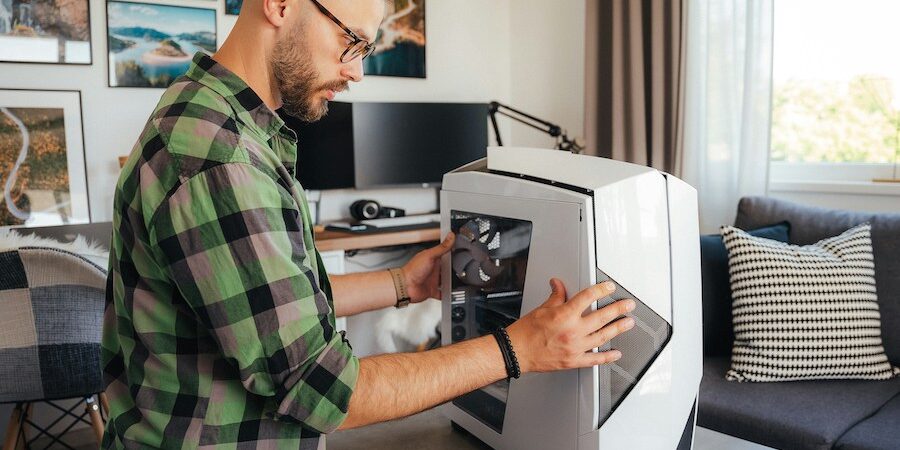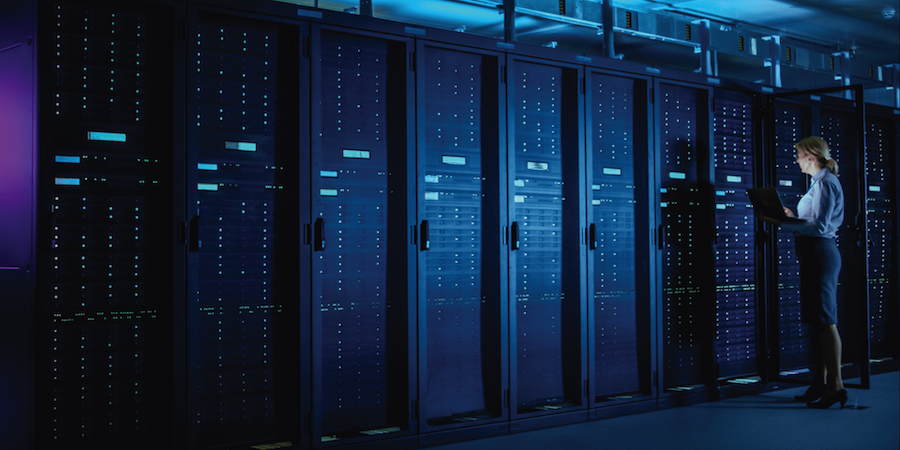If you need any more evidence to demonstrate the growing integration and popularity of solid state drives (SSDs), look to the industry forecast by SkyQuest Technology Group. According to the report, the SSD market will be worth $86.12 billion by 2030, up from $34.63 billion in 2022. The numbers provide the strongest testimony as to why SSDs are now the norm in mainstream systems and high-end laptops, as well as reasons for businesses and organizations everywhere to give their workstations a makeover and upgrade their systems.
Here are five reasons to make the switch from hard disk drives (HDD) to SSDs as you build your office workstations.
1. Applications increasingly require SSDs
Although you probably aren’t playing games on your office workstation, a new consumer trend will surely affect you in the coming months. In 2023, gamers saw several developers come out with titles that made SSDs a requirement. Microsoft, for example, requires an SSD1 with at least 130GB of free space to play its popular Forza Motorsport game. The same goes for other top games that either recommend or require SSDs.
While gaming software developers may be on the early adopter side, there’s no question that SSDs can elevate an application’s performance — and it’s only a matter of time before productivity and other office software require SSDs. One option is Samsung 990 PRO. The NVMe® SSD — available in 1TB, 2TB and 4TB configurations — is optimized for applications that require high processing power and faster loading. It features read/write speeds up to 7450/6900 MB/s, making applications such as video editing and machine learning a snap.
2. Data will be safer
Unlike SSDs, HDDs lack their own security measures, relying on software for security — and any encryption will depend on the quality of the software. SSDs, such as Samsung 870 EVO SATA, come with built-in, hardware-based AES-256 encryption, one of the best encryption protocols available. This means that the drive itself is encrypted using the security measures that governments and enterprise organizations trust.
Get your complete guide to SSD management
Discover how to effectively adopt and manage SSDs in your organization with this ultimate guide. Download Now
The security of your data also benefits from the flash memory structure of SSDs. This lack of moving parts means a longer lifespan and greater resistance to physical damage. HDDs, on the other hand, read and write data on a spinning disk, using an actuator arm to move across the disk to find and write data blocks. These moving parts eventually give out, putting your data at risk.
3. You’ll save space and power
HDDs are often bulky devices that occupy plenty of real estate inside your PC. They’re also energy-hungry, as it takes electricity to power all those moving parts. Moving parts generate heat, too, which means your PC’s fan may turn off and on in a bid to keep the CPU cool and functioning — another draw on your electricity bill.
SSDs, however, are small, streamlined devices that slide easily into your computer, completely bypassing the system’s typically limited number of SATA ports. Samsung 980, for instance, ships in an M.2 form factor using the PCIe® 3.0 interface. Available in 250GB, 500GB and 1TB options, this SSD is blazing fast, with sequential read/write speeds up to 3,500/3,000 MB/s. And yet despite all that power, it keeps heat low thanks to the nickel coating that automatically manages the controller’s heat level, rather than depending on power-sucking fans.
4. Productivity increases
The difference in load times for an HDD and an SSD can be significant. As Enterprise Storage Forum points out2, an SSD features read/write speeds that are 35 times faster than an HDD. Add up all those extra moments that you’re not waiting for your application to load and you’ve got enough time to fit in another task or grab a few extra minutes at lunch.
A faster drive also means your applications just work faster. That can be important if you’re responding quickly to surprise developments, crunching numbers for an analytics program or creating a new video for your company’s website. Plus, as the old saying goes, “Time is money,” and any savings in time adds to the productivity that builds profit.
5. More peace and quiet
When redesigning your office, you’re likely going for a tranquil environment that lends itself to productivity, and SSDs can help. If you have a traditional HDD installed on your desktop or laptop, you’re already familiar with the whir of the spinning disk and moving actuator arm. At best, it’s a subtle yet audible sound that can distract. At worst, it’s a nails-on-chalkboard grind that seems to get louder and more frustrating the longer you wait for files to load. Anyone who thrives in a quiet, peaceful work environment will appreciate the absolute silence that using an SSD provides.
A modern feel
Clients tend to trust companies that project a modern image, and a solid state drive for your desktop can play a role in that, especially to demonstrate access to and use of the latest technology. With the addition of SSDs, employees can enjoy an updated office environment that allows the space and quiet to work more efficiently and productively. As Samsung SSDs rank among the best in the world, they can help you achieve these goals faster and, over time, push past them.
Learn more about the difference between SATA and PCIe SSDs.
1 PCWorld. “You’ll need an SSD to play the next Forza game on PC.” August 22, 2023.
2 Enterprise Storage Forum. “Comparing SSD vs HDD Speed: Which Is Faster?” November 22, 2023








